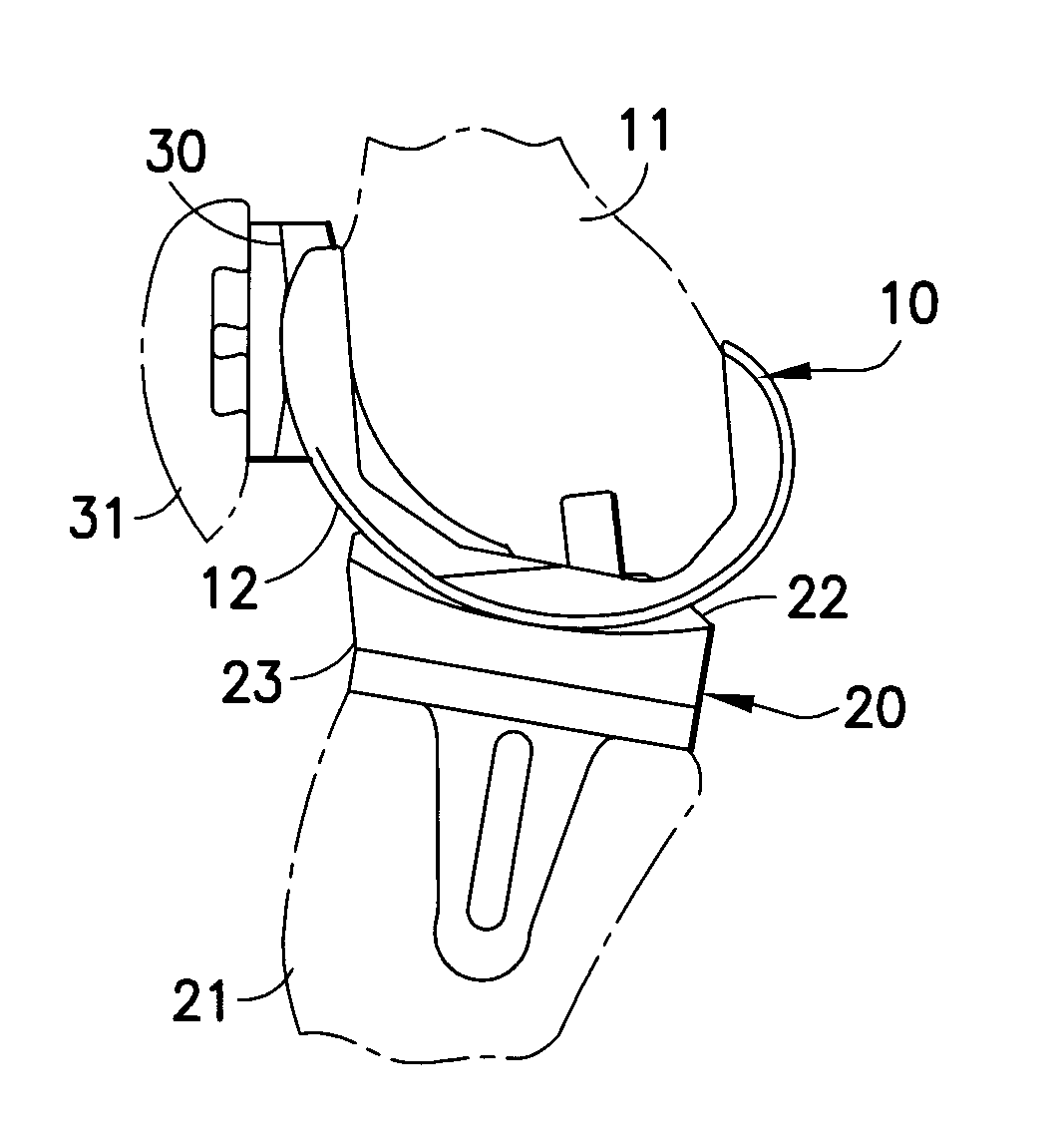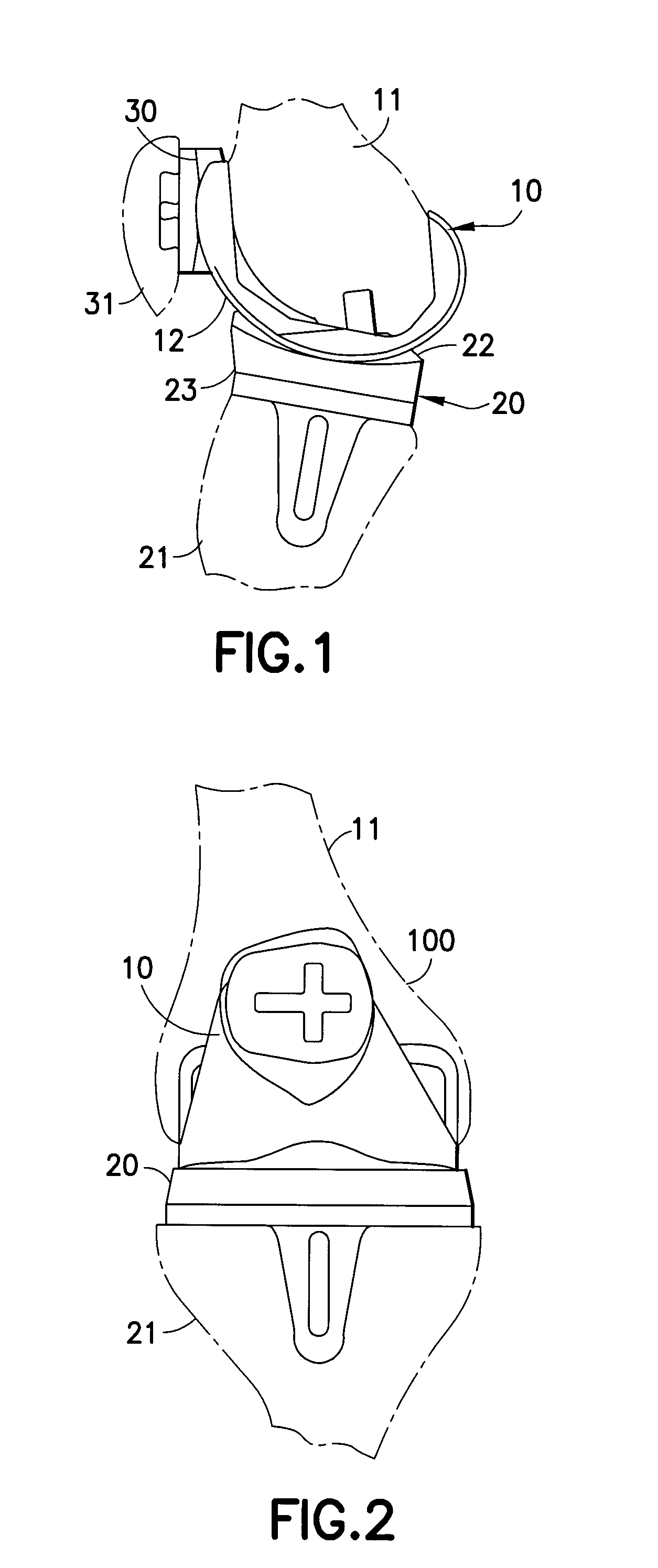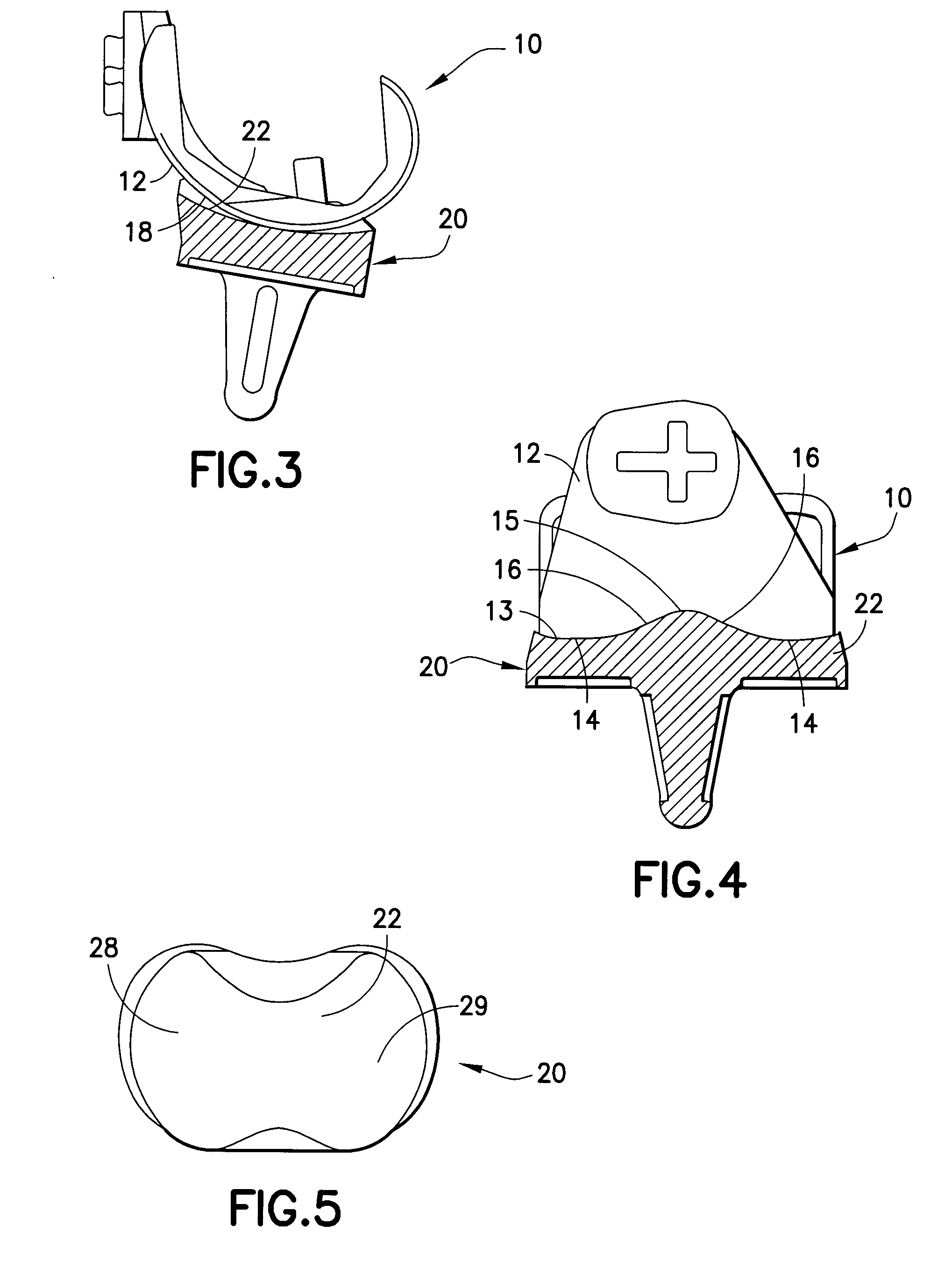Fixed bearing joint endoprosthesis with combined congruent - incongruent prosthetic articulations
a fixed bearing joint and prosthesis technology, applied in the field of prosthetic joints, can solve the problems of uneconomical justified added cost of multi-part tibial or patellar replacement, unfavorable patient rehabilitation, and quite elderly implants, and achieve the effects of reducing time and frequency of use, reducing contact stresses, and reducing the loading level
- Summary
- Abstract
- Description
- Claims
- Application Information
AI Technical Summary
Benefits of technology
Problems solved by technology
Method used
Image
Examples
Embodiment Construction
[0044]FIGS. 1 and 2 show a cruciate sacrificing total knee replacement prosthesis 100. The knee prosthesis has a metallic (Co—Cr or Titanium alloy) femoral component 10 which is fixtured to the distal femur 11, a plastic (UHMWPe) tibial component 20 fixtured to the proximal tibia 21, and a plastic patellar component 30 fixtured to the posterior patella 31. Alternately, both components may be metallic, ceramic coated metal or ceramic.
[0045]The geometry of the femoral articulating surface 12 of the femoral component 10, as shown in FIGS. 3 and 4, is a compound surface of revolution generated by revolving a generating curve 13 consisting of radii 14, radius 15, and connecting tangents 16. This geometry is described in additional detail in the above-referenced patents, including U.S. Pat. No. 4,309,778 and U.S. Pat. No. 5,507,820.
[0046]The tibial component 20 has a tibial articulating surface 22 that is generated using the same generating curve 13, except for different connecting tangen...
PUM
| Property | Measurement | Unit |
|---|---|---|
| radii | aaaaa | aaaaa |
| radius | aaaaa | aaaaa |
| metallic | aaaaa | aaaaa |
Abstract
Description
Claims
Application Information
 Login to View More
Login to View More - R&D
- Intellectual Property
- Life Sciences
- Materials
- Tech Scout
- Unparalleled Data Quality
- Higher Quality Content
- 60% Fewer Hallucinations
Browse by: Latest US Patents, China's latest patents, Technical Efficacy Thesaurus, Application Domain, Technology Topic, Popular Technical Reports.
© 2025 PatSnap. All rights reserved.Legal|Privacy policy|Modern Slavery Act Transparency Statement|Sitemap|About US| Contact US: help@patsnap.com



